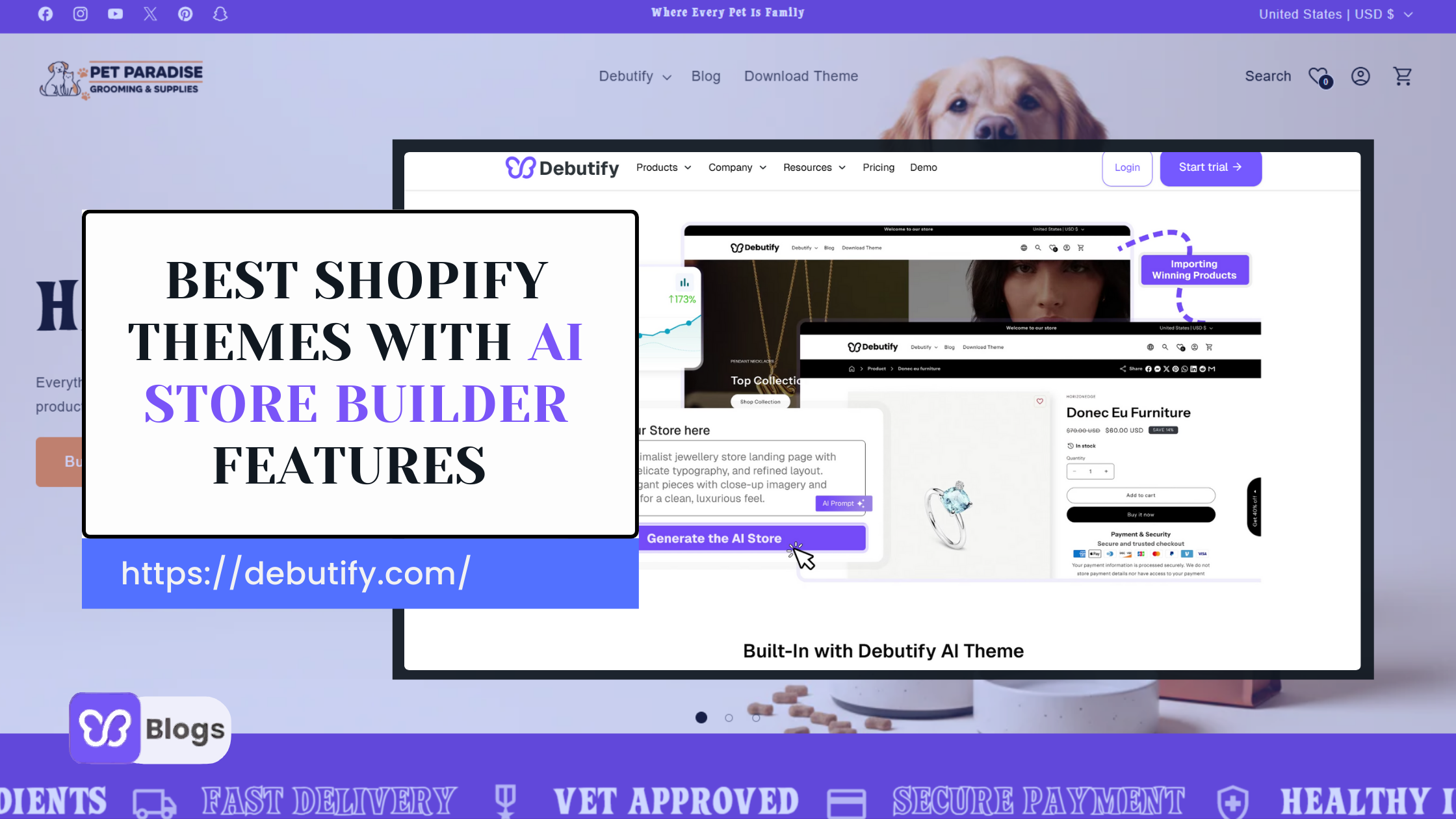It’s always important to help shoppers find the products they are looking for quickly. Many ideas have been tried here. Category lists, user-aggregated data, you name it. If you can spell out what you want, a website’s search function is probably your friend.
But it’s not quite perfect. When you fail to find what you’re searching for, it’s really annoying.
An angry shopper is easily a missed sale. To make sure you get those sales out of visitors, have the right theme for your store. Click here to get Debutify, the highest-converting free Shopify theme.
Here’s how you can use eCommerce product search to sell more:
Speak To The Person
One size doesn’t fit all. Learn from every search – especially what happened before and after it. Create profiles based on these events. When shoppers enter something similar to a previous search, bring out the data around it. What that previous searcher eventually bought.
Whether they considered price. What else they look at? This is your guide. Have all this lined up as suggestions? Bring the most common outcomes closer. Say most of the young shoppers bought the cheapest shoes. Let your search have them nearby for the next young shopper searching for shoes.
Set up your search function to give updated results as shopper searches. This is called predictive search. Another feature called type-ahead lists possible words to complete what is being typed. This is done through APIs.
These are tools used to set instructions for how your web applications will work. Slip these guides everywhere. Your website, mobile apps, and even voice searches. Their features include changing filters based on points set by the store owner.
Know Your Target
A good search isn’t always just the one that brings only what the shopper was looking for. Results, not a result. Someone who searches for “black sneakers” may be ready to look at a bunch. They may be new to the site. Your search can’t properly profile them yet.
It may bring the cheapest ones. And the ones bought the most too. Slot in that other one that looks good too but isn’t famous.
Search other sites for what’s selling most. Study your own records. Find out which listings of yours haven’t performed well so far. Get them more attention. Remember that this is a continuous task.
Shoppers who find good products they didn’t know they would like may buy more. Call it a good surprise. As such shoppers visit the store more to discover other products, and be ready to convert. Greet them with themes that limit abandoned carts to get that sale.
Source It From Outside
Building your search from scratch is a difficult mission. It’s expensive. Could take up to 2 years to be a truly effective eCommerce website search. It also requires a lot of repeated work.
Worst of all, crashes can happen every now and then. List every major thing you want your search function to deliver. Look through a list of search vendors. Find a match and plug it in.
The benefits include having predictable expenses. They also usually solve many cases already seen in the market. Here are some good examples of these search tools.
There are also hybrid services that come with assistance from a human team regularly.
Speed Up The Search
The whole point is that shoppers should be able to find products quickly. Google spoilt us. We want everything else to be that fast. Tune up your search function to respond in no more than a second. Maybe two on a bad day.
Let it be able to do the same when changes are being made to the search. A fast search isn’t only good for speeding up a sale. It also makes shoppers feel like they can look at more products without spending too much time.
The more they look at it, the more they may buy.
Optimize It For Mobile
Offer a larger search bar. Have it well-positioned on mobile screens. Watch the keyboard. Shoppers should see what they are typing just as well as they would on a desktop.
Leave space for the type-ahead suggestions. Minimize scrolling. Adjust the presentation of results to fit as many as possible on one screen. Do the same for filter sections.
Pay attention to your display on the desktop too. Don’t hide the bar. Give it a stand-out color. Make it sizeable. Place it on a visible part of the page. People shouldn’t have to look for it.
Include some text like “type here”. Don’t place the box near other boxes like the sign-up one.
Pay Attention To Images
Be able to help someone who would show you a picture saying “something like this”. Some may know this as image search. Let a shopper submit a photo. Have the search compare it to your product images.
Give the closest matches. EBay does this well. Another newer mind-blowing example is the fashion app, Trendii. Offer a visual form.
Here, shoppers can get more particular with product descriptions. “Round edges but not fully round”. “Wide brim, pointed top”. Check out this site for an example of how shoppers can search by “painting a picture”. Give the option to use a QR code.
This is kind of like a barcode but with squares. Shopper scans. Your online store receives it. The shopper is taken to the product page. A purchase is made.
If a shopper sees a product that has a QR code, they won’t even worry about describing it. It’s the snap, view, and buy.
They can also be used to represent discounts. On Shopify, you can use a free app to create shop codes for your products. Slap these on the packaging. Have them next to your displays at events.
Make them available in the physical stores. Stick them on ads too. As more traffic comes to your store from devices scanning these codes, make sure you convert.
Download the free Debutify theme for a high-converting Shopify store.
Support Voice Search
With voice search, it’s mainly about getting your store higher up in the results of searches done by voice. Create a Skill for Alexa. Bend your keywords and other site features to what’s usually mentioned by Siri, Cortana & Alexa.
Learn more on how to convert with voice search here. Offer voice search within your store. Those shoppers who don’t like typing will be pleased to have the feature. SearchNode is a good option.
Make The Most Of Filters
Once search results appear, let the shopper keep tightening them. They can choose a price range, size, color, etc. Make it smarter. With Kohl’s breadcrumbs, you can switch between filters and rearrange combinations.
No need to restart. Also, enable long tail semantic searches. They understand lengthy sentences better. A plain text search won’t work as well for something like “men’s blue checkered shirt long sleeve medium size”.
Offer Multiple Languages
Especially if you’re going to sell to various countries, with various cultural backgrounds, be prepared for searches in different languages. We've published a guide on how to run a multilingual and multi-location ecommerce store.
Correct Shoppers’ Errors
Shoppers will make mistakes often. Be ready. Organize your search technology to do spell checks and bring the nearest result. It is not good to tell the shopper that there were no results found.
Even if it’s true. Set up your search to offer filler results. Add a kind message like “We had trouble finding that. Is this close?”
Add Alternatives
Use the synonym tools to cover all bases. These make sure that your search is aware of all other words that can be used to mean a particular one. Here’s an example.
Some garden tools for cutting may be known to one shopper as shears. Another shopper type pruner. Then others search for clippers. All these shoppers should be able to find that gardening tool. These lists will need constant updating when new shoppers type other words.
Conclusion
Having an effective eCommerce product search is a continuous process. Collect data. Study it. Polish technology to give better results. You may also use product search engines to further improve your user experience. Keep in mind that you’re always adding new products to your store.
Your search has to be updated in every area for them too. Remember that you will also have to think about the products themselves. How they are identified. Posters about them. Even packaging. It’s a process that goes beyond the search technology itself.
When shoppers can find products faster, they can visit the store regularly. Good search results won’t complete the sale.
Download the free Debutify theme, the highest-converting Shopify theme, to get more sales out of your product searches.




